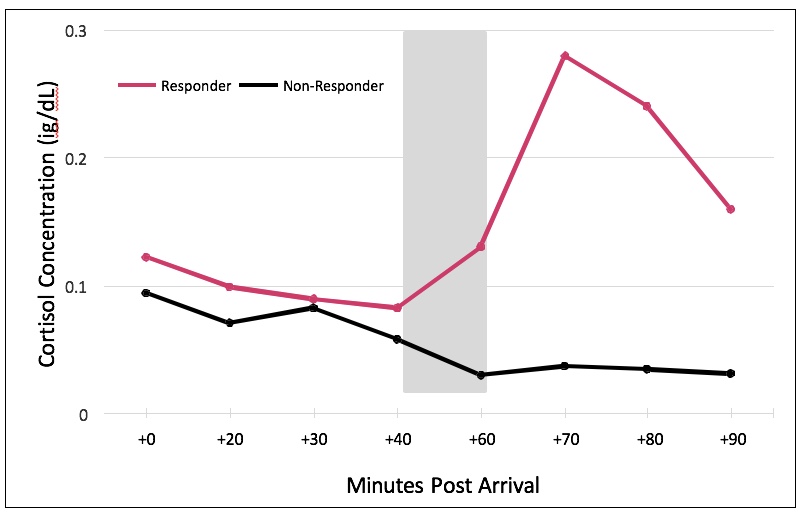By Max Herzberg
We often take it for granted that different people respond to stress in unique ways. How adolescent’s brains and bodies react to social stress, however, is not yet well understood. When we experience stressful circumstances our bodies produce a hormone called cortisol that helps us to respond appropriately to the source of stress. Research in adults has shown that only about 60% of people produce more cortisol in response to social stress, while the other 40% do not. These researchers have suggested that these differences are related to different patterns of activation in the brain. We are interested in finding out if patterns of brain activation are different in youth who produce a cortisol response compared to those who do not.
Recently our research group has begun a project to answer this question and investigate the differences between adolescents who produce cortisol in response to stress and adolescents who do not. We developed a new social stress test to be used in an MRI scanner. To ensure that the social stress tasks will work in the scanner, we completed
a preliminary study in an MRI simulator. Twenty-two adolescents, ages 11-14 years old, came to the University to participate in our preliminary study. Some of the youths gave a speech about themselves to a pair of judges and then solved math problems out loud, while other youths completed the speech and then answered multiple choice math problems on a screen in the simulator.
Our results indicate that, like adults, not all adolescents produce cortisol in response to giving a speech and doing some math. As expected, approximately 60% of the participants we tested displayed a cortisol response, while the other 40% did not. We call these groups “Responders” and “Non-Responders,” respectively. Figure 4 shows the group-level cortisol response to our social stress test, with both the Responder and Non-Responder groups represented. To follow up on these results we will be starting a full-scale neuroimaging study to investigate differences in brain activation between Responders and Non-Responders this summer.

We will investigate whether brain activity during stress tasks can explain differences between individual’s responses or if patterns of brain activity before and after stress better explain individual differences. Another possible use of our new imaging test will be to investigate whether or not having the support of a parent, friend, or stranger changes the response of the brain and body to stress. This project, and possible future studies, is our first attempt to discover the brain activation in response to stress in adolescents, so we have a lot to learn about the future applications of our findings and how they will inform our understanding of the developing stress system.
To help us learn more about adolescent’s brain response to stress, we encourage families with children 11-14 years old to participate in the Minnesota Imaging Stress Test in Children (MISTiC) Study. Please contact Max Herzberg at mistic.umn@gmail.com.



